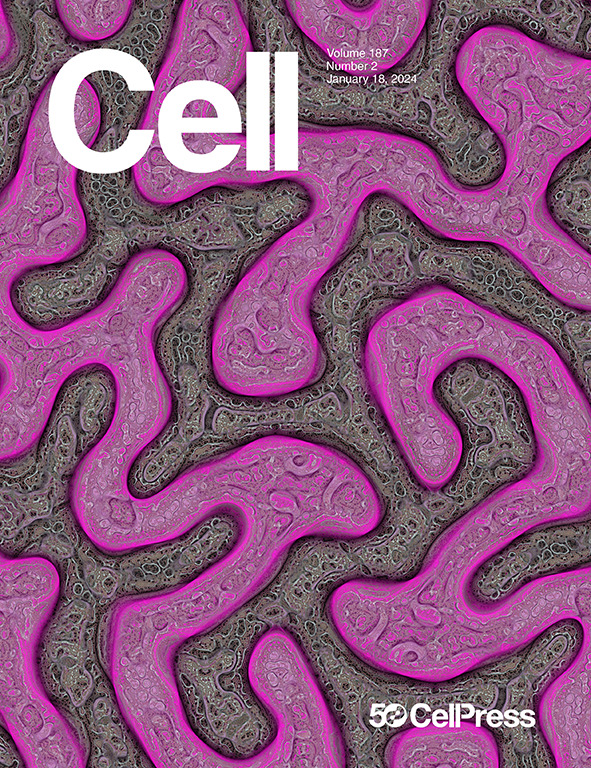胰岛素抵抗和2型糖尿病的个性化分子特征
IF 42.5
1区 生物学
Q1 BIOCHEMISTRY & MOLECULAR BIOLOGY
引用次数: 0
摘要
胰岛素抵抗是2型糖尿病的标志,2型糖尿病是一种具有多种病理的高度异质性疾病。了解胰岛素抵抗的分子特征及其与个体表型性状的关系对于推进2型糖尿病的精准医疗至关重要。利用尖端的蛋白质组学技术,我们绘制了120名患有正常葡萄糖耐量或2型糖尿病的男性和女性骨骼肌的蛋白质组和磷蛋白质组,这些患者具有不同程度的胰岛素敏感性。利用体内深层表型,我们揭示了空腹蛋白质组和磷蛋白质组特征强烈预测胰岛素敏感性。此外,胰岛素刺激的磷酸化蛋白组显示信号节点既失调又保留,即使在严重胰岛素抵抗的个体中也是如此。虽然蛋白质组和磷蛋白质组存在显著的性别差异,但胰岛素抵抗的分子特征在男性和女性之间基本相似。这些发现强调了将疾病异质性纳入2型糖尿病治疗策略的必要性。本文章由计算机程序翻译,如有差异,请以英文原文为准。

Personalized molecular signatures of insulin resistance and type 2 diabetes
Insulin resistance is a hallmark of type 2 diabetes, which is a highly heterogeneous disease with diverse pathology. Understanding the molecular signatures of insulin resistance and its association with individual phenotypic traits is crucial for advancing precision medicine in type 2 diabetes. Utilizing cutting-edge proteomics technology, we mapped the proteome and phosphoproteome of skeletal muscle from >120 men and women with normal glucose tolerance or type 2 diabetes, with varying degrees of insulin sensitivity. Leveraging deep in vivo phenotyping, we reveal that fasting proteome and phosphoproteome signatures strongly predict insulin sensitivity. Furthermore, the insulin-stimulated phosphoproteome revealed both dysregulated and preserved signaling nodes—even in individuals with severe insulin resistance. While substantial sex-specific differences in the proteome and phosphoproteome were identified, molecular signatures of insulin resistance remained largely similar between men and women. These findings emphasize the necessity of incorporating disease heterogeneity into type 2 diabetes care strategies.
求助全文
通过发布文献求助,成功后即可免费获取论文全文。
去求助
来源期刊

Cell
生物-生化与分子生物学
CiteScore
110.00
自引率
0.80%
发文量
396
审稿时长
2 months
期刊介绍:
Cells is an international, peer-reviewed, open access journal that focuses on cell biology, molecular biology, and biophysics. It is affiliated with several societies, including the Spanish Society for Biochemistry and Molecular Biology (SEBBM), Nordic Autophagy Society (NAS), Spanish Society of Hematology and Hemotherapy (SEHH), and Society for Regenerative Medicine (Russian Federation) (RPO).
The journal publishes research findings of significant importance in various areas of experimental biology, such as cell biology, molecular biology, neuroscience, immunology, virology, microbiology, cancer, human genetics, systems biology, signaling, and disease mechanisms and therapeutics. The primary criterion for considering papers is whether the results contribute to significant conceptual advances or raise thought-provoking questions and hypotheses related to interesting and important biological inquiries.
In addition to primary research articles presented in four formats, Cells also features review and opinion articles in its "leading edge" section, discussing recent research advancements and topics of interest to its wide readership.
 求助内容:
求助内容: 应助结果提醒方式:
应助结果提醒方式:


